Pirelli encouraged as prototypes show improvements in 'raceable' 2017 tyres
- Published
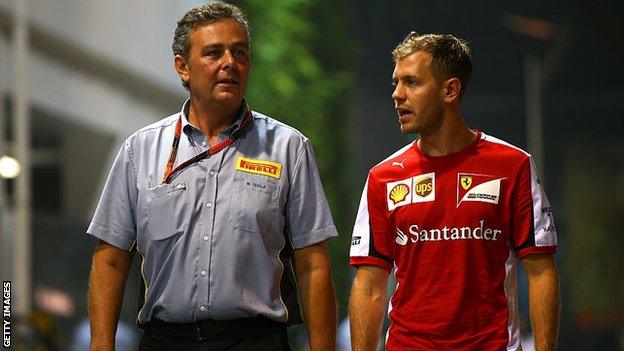
Sebastian Vettel (right) conducted the first development test at Ferrari's Fiorano test track in August
Formula 1 tyre supplier Pirelli is hopeful it is on course to deliver the more raceable tyres demanded for 2017.
Governing body the FIA has requested tyres that allow drivers to push to the limit for the first time in years.
Red Bull team boss Christian Horner said the latest prototypes "looked like a good step forward".
Pirelli racing manager Mario Isola told BBC Sport: "We feel we're on the proper way for compounds and technology, even if we still have a big job ahead."
Isola said the most recent test, using a Red Bull car in Abu Dhabi earlier this month, had been "quite encouraging".
Red Bull reserve driver Pierre Gasly told BBC Sport the tyres he ran were greatly improved in allowing a driver to push hard for a significant number of laps.

What will change for next season...
That is in contrast to the tyres Pirelli has supplied to F1 since 2011, which require drivers to lap at least a second off the pace during races to prevent them overheating and irreversibly losing grip.
Horner said: "It was a pretty sensible test. The car ran round for the three days and it definitely looked like a good step forward for next year in terms of grip, durability and giving the drivers a proper workout. It looks like a good direction."
Why were there worries about 2017 tyres?
After the first series of tests, there had been concerns Pirelli might not be able to make the required changes to tyres, which will be wider next year and fitted to cars designed to new rules aimed at making them faster and more dramatic looking.
Ferrari's Sebastian Vettel conducted the first development test at Ferrari's Fiorano test track at the beginning of August, when he ran for half a day in the dry before conducting the rest of the two-day test on wet tyres.
In public, Vettel said the test had been "an interesting experience". In private, he said the development tyres behaved in exactly the same manner as the current ones, sources told BBC Sport.
Swiss former F1 driver Sebastien Buemi reported the same experience after a subsequent test at Mugello with Red Bull.
Mark Webber, another former F1 driver, said he had spoken to both Vettel and Buemi and they were "not hugely happy". He added Pirelli still had "a lot of work to do".
However, progress was made at a test conducted by Ferrari at Spain's Circuit de Barcelona-Catalunya in September, after which Vettel told Pirelli there was one tyre he particularly liked.
This, Pirelli says, was a tyre of the 'soft' compound, and was also of the same design as the tyres Gasly felt in Abu Dhabi were a great improvement.
A spokesman added the company had also found in Abu Dhabi a 'medium' compound tyre that provided a similarly good behaviour.
Are there still concerns?
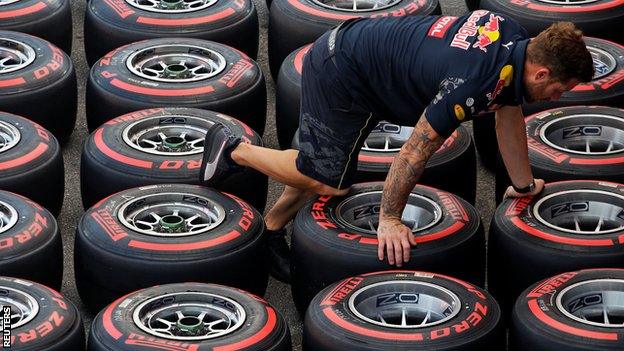
Pirelli has a final development test with Mercedes, Ferrari and Red Bull after the final race of the season
Pirelli says it is pleased to have found a direction that seems to allow it to provide the tyres F1 wants for 2017, but says it is aware it still has some work to do and would have preferred more testing.
It lost a test with Mercedes at Barcelona earlier this month to poor weather.
There has also been a dispute over whether pre-season testing should be held in Bahrain, as Pirelli wanted, or in Spain, as most teams preferred. This has been resolved with a compromise that will see the two four-day pre-season tests conducted at Barcelona and an in-season test in Bahrain after the race in April.
Pirelli has also been concerned that the 'mule' cars used for the tests - 2015 cars modified in an attempt to replicate the effect of the new rules for next year - are not fast enough.
They are showing an increase in downforce of only 10%, while a document from the FIA seen by BBC Sport shows one team is predicting a 31% increase in downforce for the start of next year. Many expect at least a 20% increase.
These concerns were heightened when the fastest lap time set by Vettel at the September Barcelona test in the mule Ferrari would have qualified him at the back of the grid for this year's Spanish Grand Prix.
But senior figures said the lap times were irrelevant because the test cars are much heavier than the race cars will be next year and are using old engines being run at low power to ensure reliability.
Pirelli's desperation to have more representative cars to test with was also questioned by Fernando Alonso at the drivers' briefing at this month's Japanese Grand Prix.
The McLaren driver pointed out this year's grid has a four-second spread between the Mercedes and Manor cars, and the tyres worked across all of them.
Team bosses and drivers attending the meeting told BBC Sport they felt Isola did not satisfactorily answer Alonso's subsequent question as to why, in this context, Pirelli could not simply extrapolate from the test data the extra loads that would be created by the actual 2017 cars.
Pirelli has another test in Abu Dhabi, with Ferrari from 15-17 November, before a final 2017 development test with Mercedes, Ferrari and Red Bull in attendance after the final race of the season at Yas Marina.
What does F1 want from tyres in 2017?
The desire for what F1 drivers would regard as 'better' tyres next year came after increasing dissatisfaction with the current rubber.
This focused on the fact it prevented drivers pushing flat out throughout races but also arose from a number of failures that have happened at high speed over recent years.
These concerns led to a meeting between Pirelli, several leading drivers and team bosses at the tyre manufacturer's base in Milan in February, at which Pirelli requested a 'target letter' from the FIA stipulating what F1 wanted from the tyres for the faster cars that will be introduced in 2017.
The key points of this letter were that:
Tyre degradation should be proportional to performance, so the less grippy a tyre is, the longer it will run before it starts to degrade.
When a car is closely following another, its tyres should not degrade to the extent their performance cannot be recovered.
The FIA feels these requirements will guarantee Pirelli has to produce a product more like what would be considered a normal racing tyre - one on which the requirement for management by driving under the limit to control thermal degradation is greatly reduced, and drivers can therefore push hard throughout a race.
The letter is part of Pirelli's new contract to supply F1 from 2017-19.
Subscribe to the BBC Sport newsletter, external to get our pick of news, features and video sent to your inbox.
- Published29 October 2016
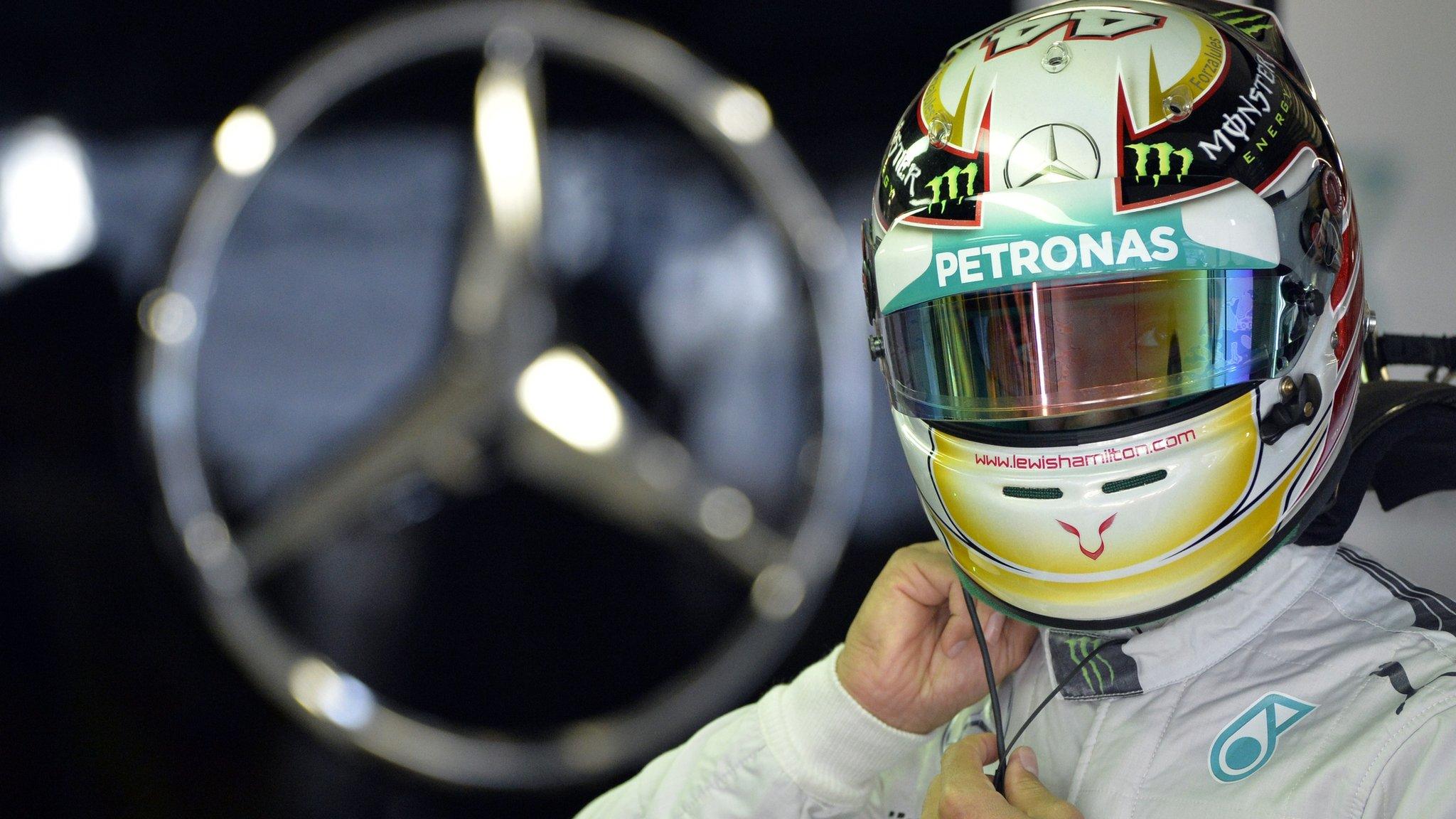
- Published30 October 2016
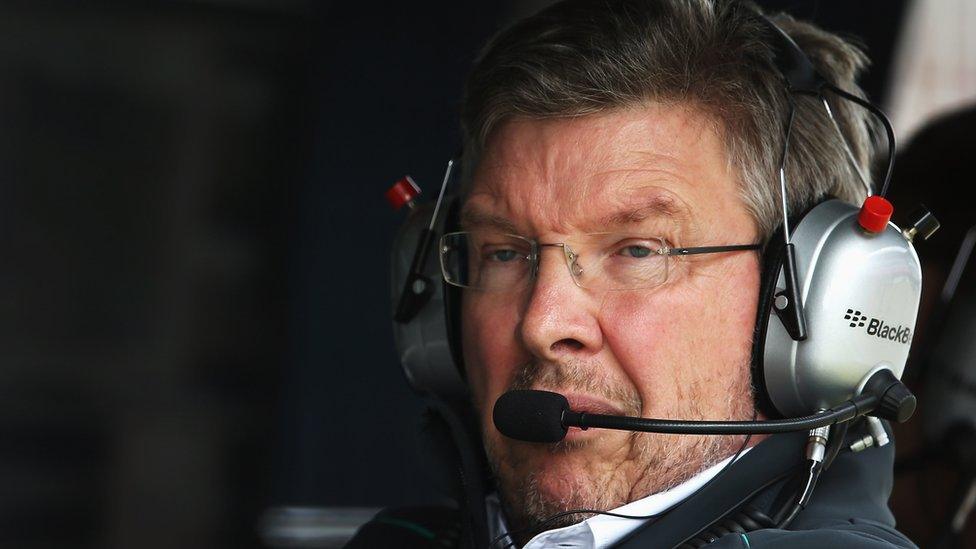
- Published29 October 2016
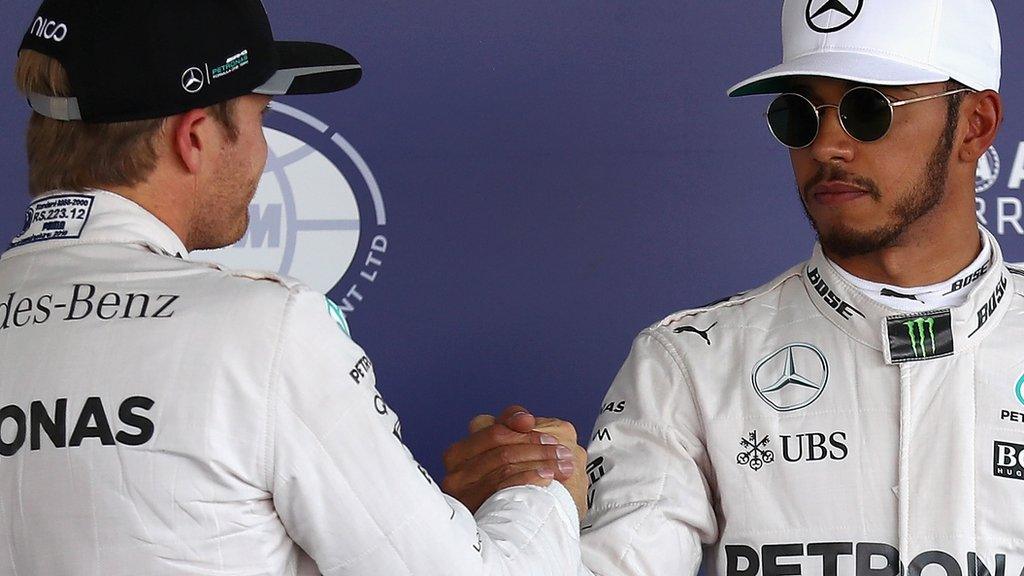
- Published18 December 2015

- Published8 August 2017
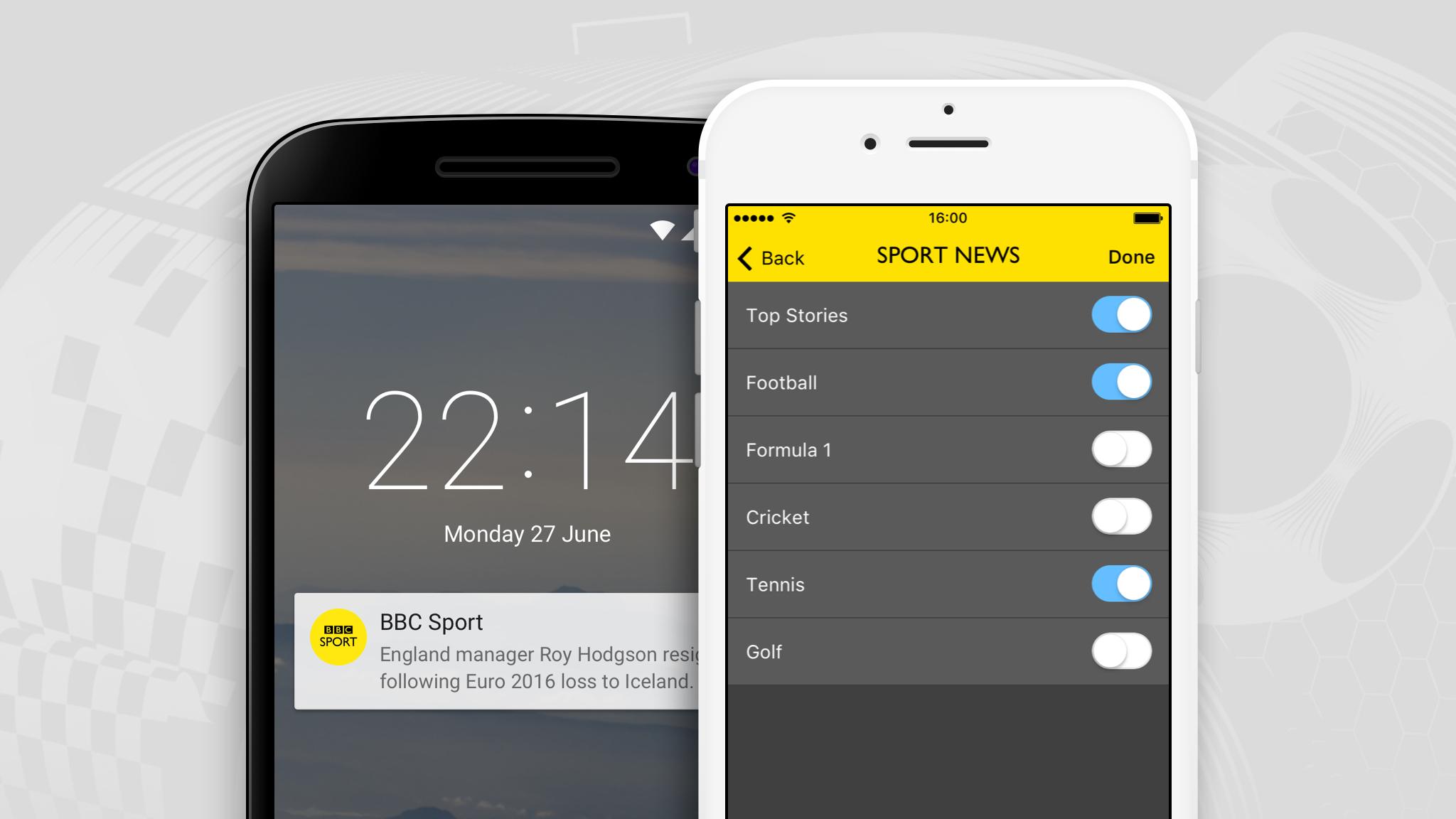
- Published13 May 2016

- Published26 February 2019
